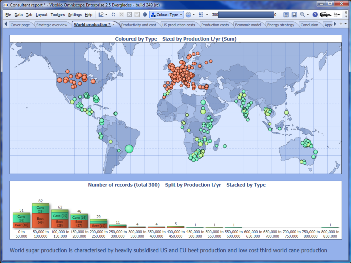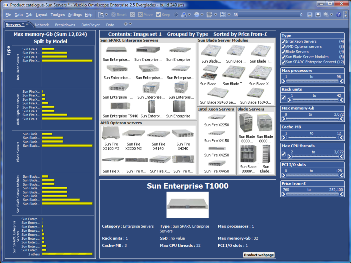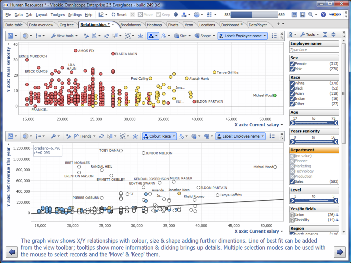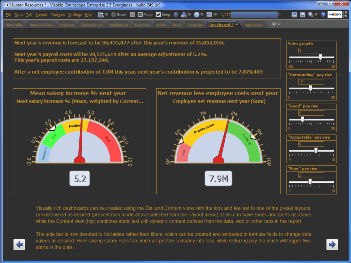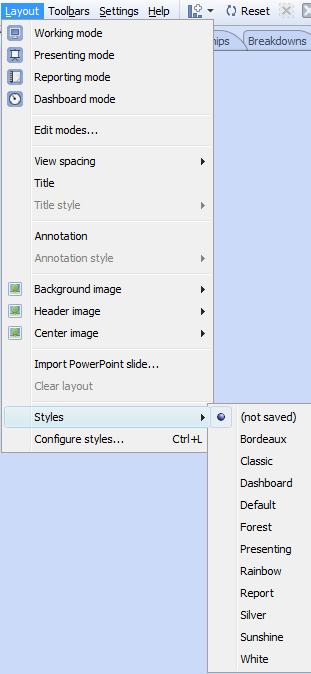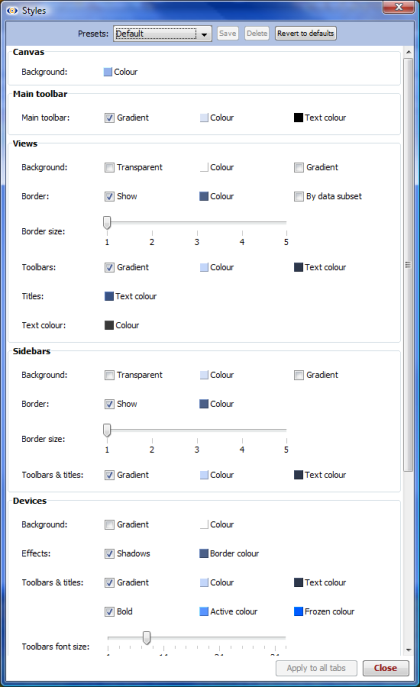- Features by Edition
- Latest Features
- Licensing/Activation
- Installation
- Getting Started
- Data Sources
- Deployment/Publishing
- Server Topics
- Integration Topics
- Scaling/Performance
- Reference
- Specifications
- Video Tutorials and Reference
- Featured Videos
- Demos and screenshots
- Online Error Report
- Support
- Legal-Small Print
- Why Omniscope?

|
|
|||||
Using StylesConfiguring and Using StylesMatching your corporate document standards across filesOmniscope enables anyone to create a corporate Style corresponding to your corporate colours and presentation standards, using a combination of official logos, font settings, colours and effects defined using the Layout > Configure styles dialog. Change the settings and observe the result interactively. Once you are satisfied with all the settings, name and save your custom Style preset and it will be added to your Layout > Styles menu. You can also copy this customised style preset to others in your organisation, so that the official corporate style becomes available in the same menu to everyone configuring files (see below).
Using Layout ModesEach of the default Layout modes also has a default style is optimised for the different uses: Working mode: for general data analysis and file configuration, with all toolbars revealed. Presenting mode: for power users presenting to others interactively, with some toolbars hidden. Reporting mode: for routine reports and printing a static copies, with all toolbars hidden. Dashboard style: use this for clean, remote displays with frequently refreshing data. You can edit the default layout modes on a file-by-file basis, but you cannot share these settings with others configuring new files as you can using custom Styles. Controlling colours and presentation for all new filesStyles are combinations of display settings you can change using the Layout > Configure styles dialog. These settings control most of the visible aspects of each file, outside of the controls available within individual views. A pre-defined Style called 'Default' is used for every file unless you make a change. A menu of alternative pre-defined styles is available under Layout > Styles. You can apply different 'looks' by changing the style applied to the open file.
Customising, Saving, Exporting & Installing stylesIf you change any settings relative to the current style preset, the Preset selection drop down will show that the new altered preset is not saved. Click Save to give a name to the newly-modified style preset and save it to your installation, from which it will be available for future use, and transferable in the form of an .XML file you can copy across machines.
|
